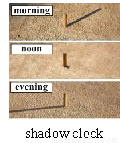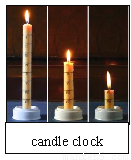题目内容
Garbage(垃圾) Island
You can’t see it from the air. It’s almost impossible to see from a ship. But somewhere in the North Pacific is a huge island of garbage, just below the water surface.
What is the island made of?
The garbage island is not an island, but a collection of millions of plastic and other objects(物体). The water movements of the Pacific Ocean bring the objects together and cause them to go around in a big circle.
Charles Moore found it in 1997 and named it “the Great Pacific Garbage Patch”.
Where does all the plastic come from?
Much of the garbage comes from everyday objects, such as shopping bags and water bottles. Some of these objects finally reach the ocean. Garbage from the western coast of North America takes about six years to reach it. Objects from East Asia take about a year. Other garbage comes from ships passing through the area.
Is the Garbage Patch dangerous?
The larger pieces of garbage are a problem for wildlife. For example, sea turtles(海龟) and seabirds often think the plastic is their food. They eat the plastic and die.
In addition, the plastic stops sunlight from reaching deeper water. Without sunlight, very small sea animals die. Then, there is less food for larger fish to eat.
What can we do to help stop it?
Cleaning up the island isn’t easy. But we can make people realize the problem. One environmentalist(环保主义者), David de Rothschild, is sailing around the world on a boat made of plastic bottles to teach people about the problem of garbage in the sea.
Another idea is that we can recycle the plastic garbage. Environmental engineer Cesar Harada is building a robot that collects pieces of plastic. Harada hopes to use his robot in the Pacific. Harada also has a website for reporting environmental problems. He says, “I hope everybody can become an environmental activist.”
1.What is the garbage made of?
___________________________________________________________
2.How long does it take objects from East Asia to reach the island?
___________________________________________________________
3.Is the garbage island dangerous?
___________________________________________________________
4.Why is David de Rothschild sailing on a bottle boat?
___________________________________________________________
5.According to the writer, what can we do to help stop garbage island?
___________________________________________________________
1.It is made of millions of plastic and other objects. 2.About a year. 3.Yes, (it is) 4.Because he wants to teach people about the problem of garbage in the sea. 5.We can make people reali... 开心蛙状元测试卷系列答案
开心蛙状元测试卷系列答案


